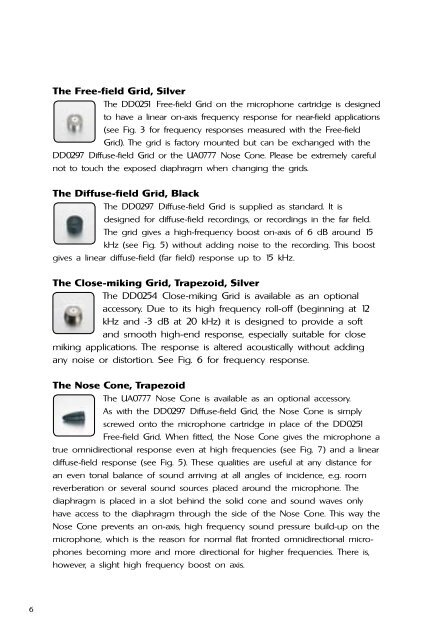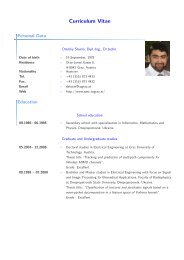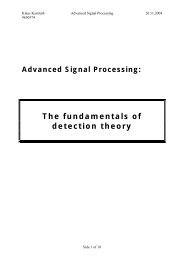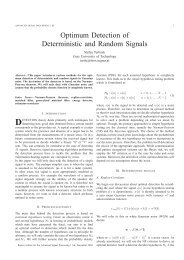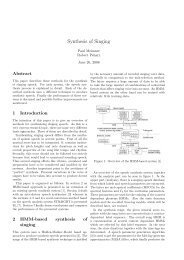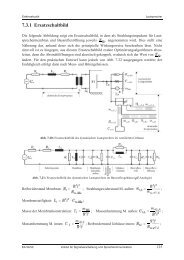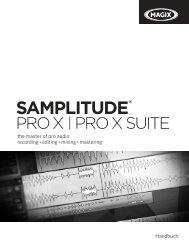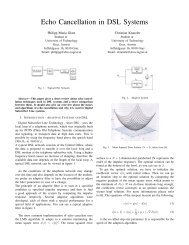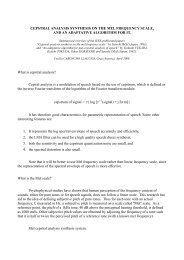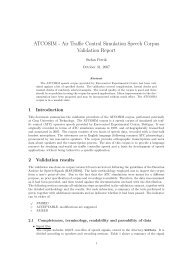4003 / 4006-TL - DPA Microphones
4003 / 4006-TL - DPA Microphones
4003 / 4006-TL - DPA Microphones
Create successful ePaper yourself
Turn your PDF publications into a flip-book with our unique Google optimized e-Paper software.
The Free-field Grid, Silver<br />
The DD0251 Free-field Grid on the microphone cartridge is designed<br />
to have a linear on-axis frequency response for near-field applications<br />
(see Fig. 3 for frequency responses measured with the Free-field<br />
Grid). The grid is factory mounted but can be exchanged with the<br />
DD0297 Diffuse-field Grid or the UA0777 Nose Cone. Please be extremely careful<br />
not to touch the exposed diaphragm when changing the grids.<br />
The Diffuse-field Grid, Black<br />
The DD0297 Diffuse-field Grid is supplied as standard. It is<br />
designed for diffuse-field recordings, or recordings in the far field.<br />
The grid gives a high-frequency boost on-axis of 6 dB around 15<br />
kHz (see Fig. 5) without adding noise to the recording. This boost<br />
gives a linear diffuse-field (far field) response up to 15 kHz.<br />
The Close-miking Grid, Trapezoid, Silver<br />
The DD0254 Close-miking Grid is available as an optional<br />
accessory. Due to its high frequency roll-off (beginning at 12<br />
kHz and -3 dB at 20 kHz) it is designed to provide a soft<br />
and smooth high-end response, especially suitable for close<br />
miking applications. The response is altered acoustically without adding<br />
any noise or distortion. See Fig. 6 for frequency response.<br />
The Nose Cone, Trapezoid<br />
The UA0777 Nose Cone is available as an optional accessory.<br />
As with the DD0297 Diffuse-field Grid, the Nose Cone is simply<br />
screwed onto the microphone cartridge in place of the DD0251<br />
Free-field Grid. When fitted, the Nose Cone gives the microphone a<br />
true omnidirectional response even at high frequencies (see Fig. 7) and a linear<br />
diffuse-field response (see Fig. 5). These qualities are useful at any distance for<br />
an even tonal balance of sound arriving at all angles of incidence, e.g. room<br />
reverberation or several sound sources placed around the microphone. The<br />
diaphragm is placed in a slot behind the solid cone and sound waves only<br />
have access to the diaphragm through the side of the Nose Cone. This way the<br />
Nose Cone prevents an on-axis, high frequency sound pressure build-up on the<br />
microphone, which is the reason for normal flat fronted omnidirectional microphones<br />
becoming more and more directional for higher frequencies. There is,<br />
however, a slight high frequency boost on axis.<br />
6


